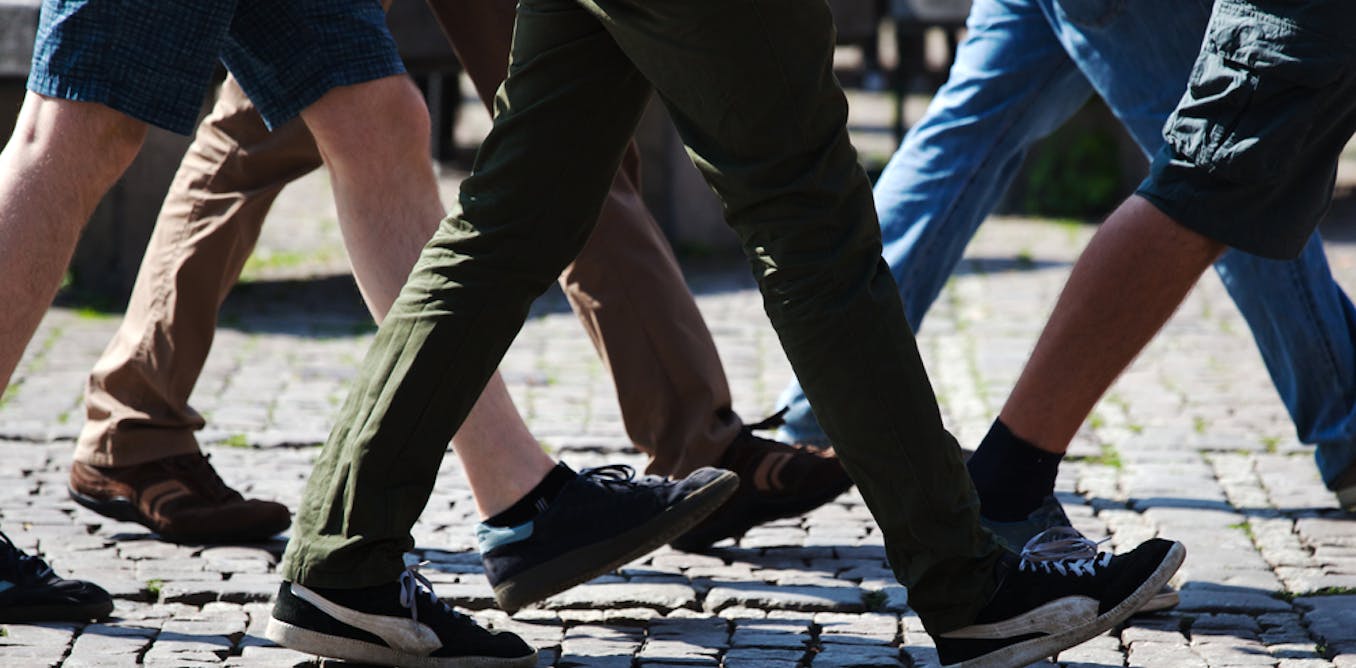
Sit less, move more: new physical activity guidelines
- Select a language for the TTS:
- UK English Female
- UK English Male
- US English Female
- US English Male
- Australian Female
- Australian Male
- Language selected: (auto detect) - EN
Play all audios:

Australians should aim for around 60 minutes of physical activity per day, double the previous recommendation, according the new national physical activity guidelines, published today. And
for the first time, the guidelines urge the 12 million Australians who are sedentary or have low levels of physical activity to limit the time they spend sitting. The recommendations aim to
prevent unhealthy weight gain and reduce the risk of some cancers. Physical inactivity is the second-greatest contributor to the nation’s cancer burden, behind smoking. The guidelines
emphasise that doing any physical activity is better than doing none, but ideally adults will get 150 minutes of moderate physical activity each week. This includes brisk walking,
recreational swimming, dancing and household tasks such as raking leaves. This could be swapped for 75 minutes of high-intensity exercise that makes you “huff and puff”, such as jogging,
aerobics, fast cycling and many organised sports. Ten minutes of vigorous exercise equals moderate-intensity activity. The guidelines also recommend including muscle-strengthening activities
at least two times a week. This could be achieved by going to the gym and using free weights or resistance exercise machines. “But it also includes things like going to the store and
carrying your shopping bags,” said Jannique van Uffelen, senior research fellow in active living at Victoria University. “It’s anything where you’ve got repeated stimuli with increasing
weight or resistance for your muscles so they become stronger.” Baker IDI’s laboratory head of physical activity David Dunstan said he was heartened to see the recommendations emphasise the
health harms of prolonged sitting, for which there has been growing evidence over the past decade. “For many people, sitting occupies a lot of their time. We need to be encouraging people to
avoid long periods of sitting and break up sitting throughout the day,” he said. “If you’ve been sitting for an hour, you’ve been sitting for too long. We should be aiming to break up
sitting times with light-intensity activity one to two times per hour.” The other major change to the guidelines is the inclusion of muscle strengthening activity, Associate Professor
Dunstan said, and the acknowledgement that while brisk walking will improve heart fitness, it will not necessarily improve muscle strength. “What happens is as we hit the age of 45, we start
to lose our muscle mass and that’s accelerated once we get past 65,” he said. “As we lose our muscle mass, we lose our muscle strength, which is an important part of our daily lives.” Dr
van Uffelen said the guidelines were “thorough and comprehensive” and based on the latest international evidence. But with just 43% of Australians meeting the previous target of 30 minutes
of moderate-intensity activity on most days of the week, many people found it difficult to work the recommendations into their day-to-day life. “We live in a society where it’s often easier
to jump in a car than to go for a walk or to get to places on your bike,” Dr van Uffelen said. Governments must “make it easier for people to choose the active option, instead of the passive
option – for example, good infrastructure for active transport,” she said. KIDS’ ACTIVITY The guidelines recommend children aged five to 12 accumulate at least 60 minutes of moderate- to
vigorous-intensity physical activity each day and include activities that strengthen the muscles and bones three days per week. “We’re not suggesting that young children go out and start
lifting weights,” said Alfred Deakin Professor at Deakin University Jo Salmon, who co-authored the scientific review and recommendations for children. “Strength training activities include
running, jumping, skipping, sports like netball or basketball – anything that involves being on your feet and running around. Even hanging from the monkey bars, you’re holding their own body
weight,” she said. “This is based on evidence around strength training for optimising bone health for kids – that’s really going to see them have much less chance of developing osteoporosis
in adulthood. Childhood is really a key period for laying down healthy bones.” The guidelines also emphasise the importance of reducing the time children spend sitting. And it’s not just to
promote physical health, Professor Salmon said, emerging evidence shows prolonged sitting affects cognitive development and educational outcomes. Teachers can play a part by delivering
standing lessons, she said, by delivering standing lessons, getting children up during class, giving active homework and encouraging students to complete their homework while standing. “The
other major part of sitting for a lot kids and adolescents is sitting in a car. So if you can promote active transport and even public transport and walking to school, you’re going to reduce
the sitting time in transit,” Professor Salmon said.
